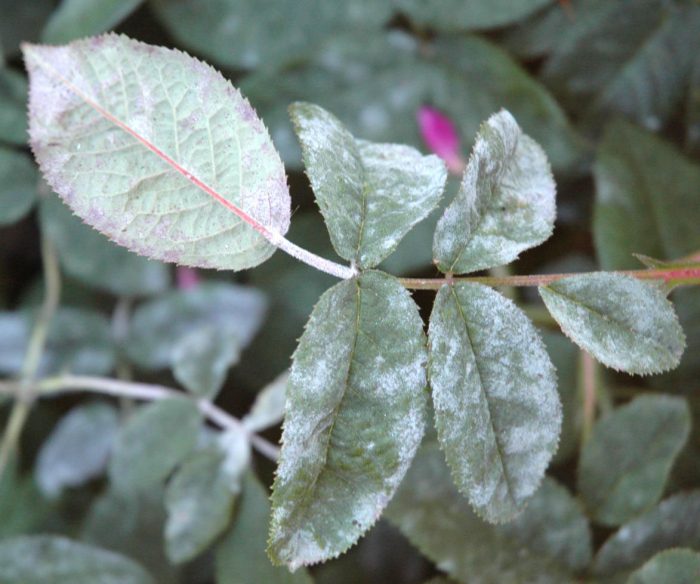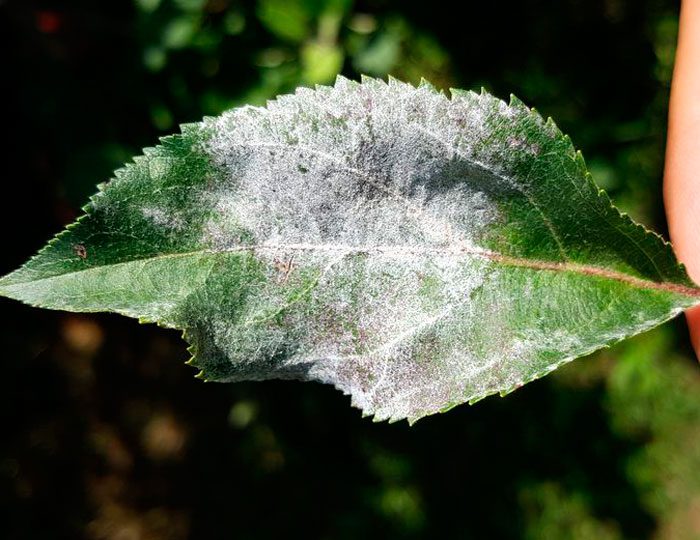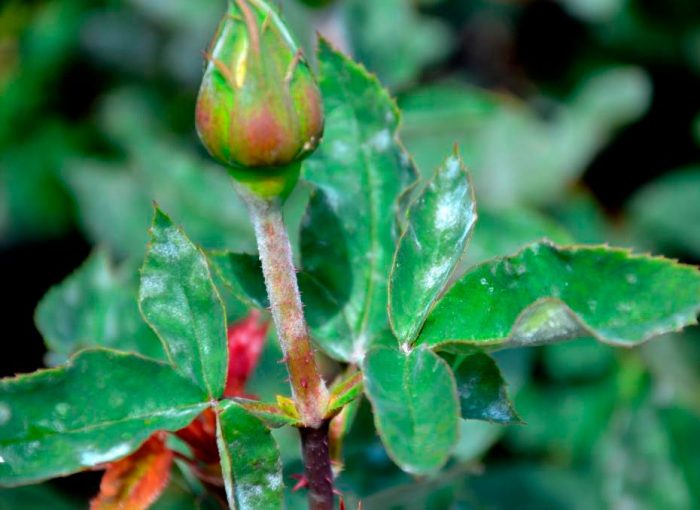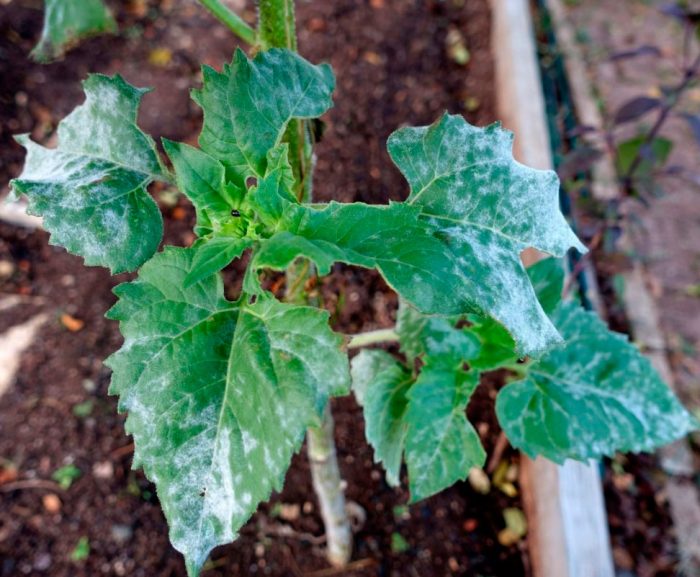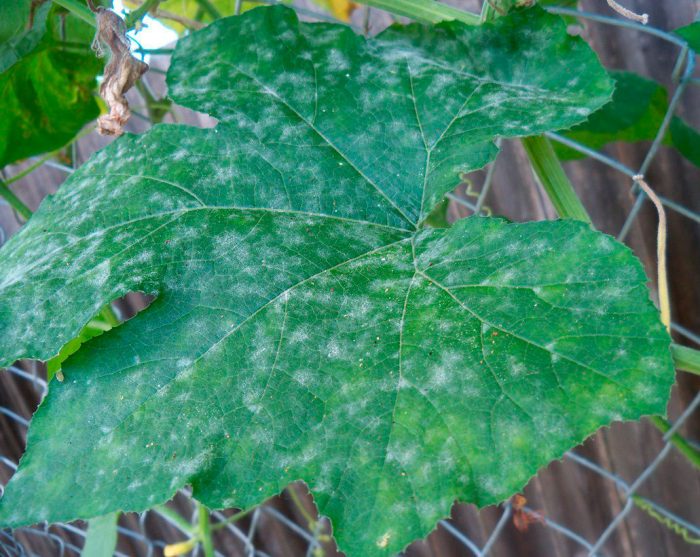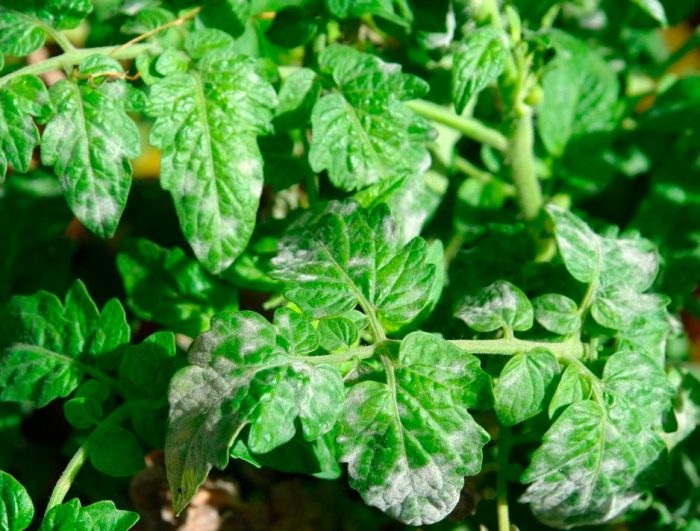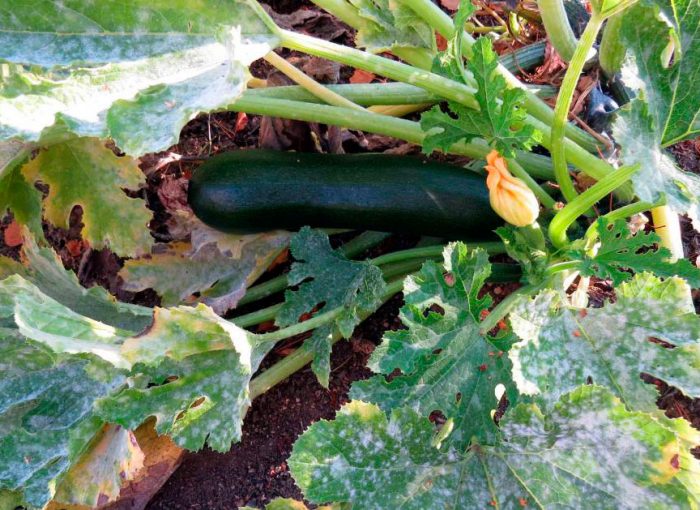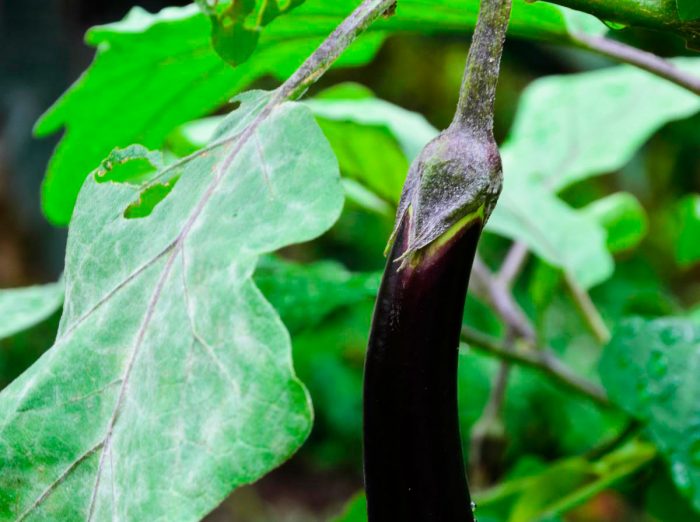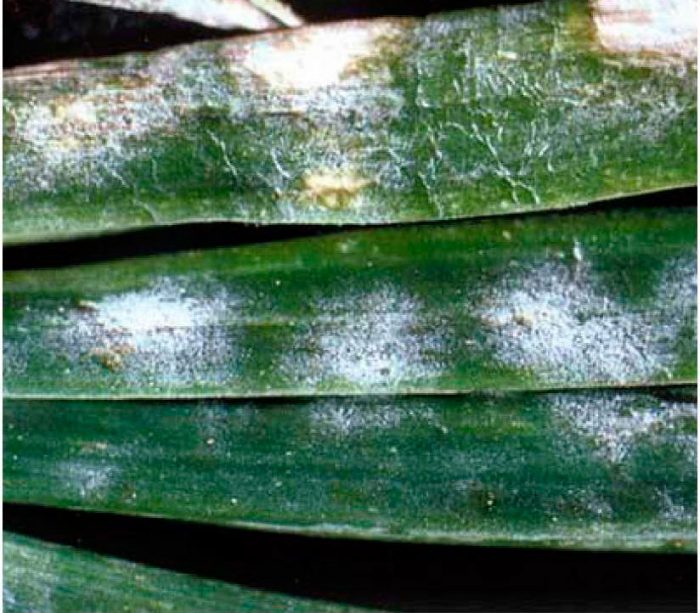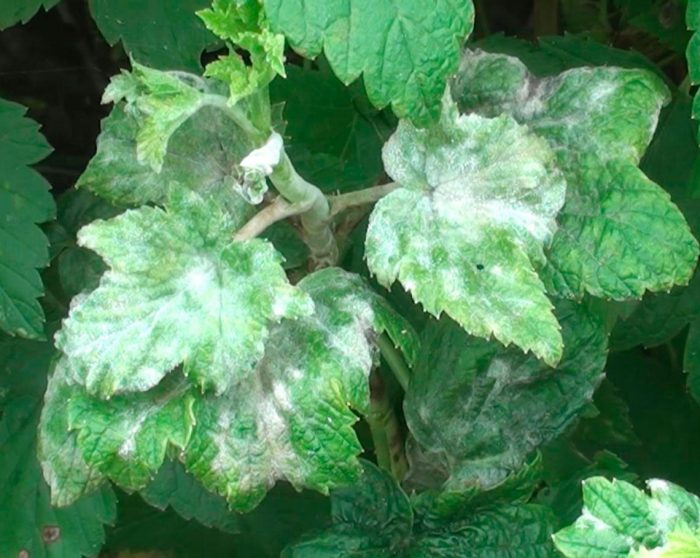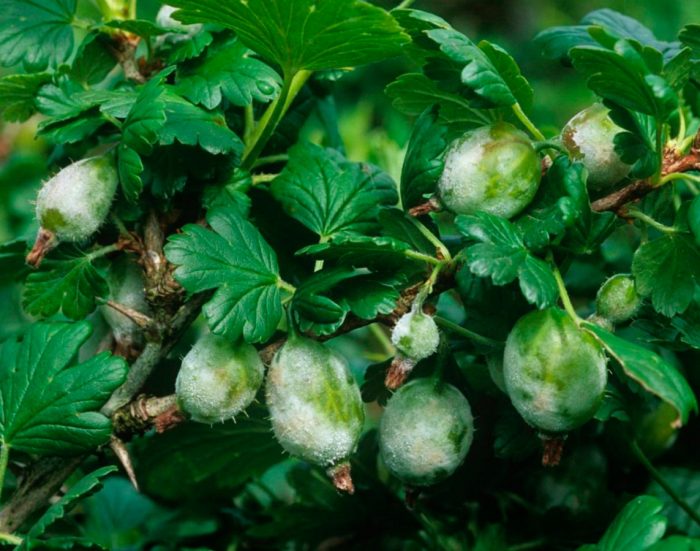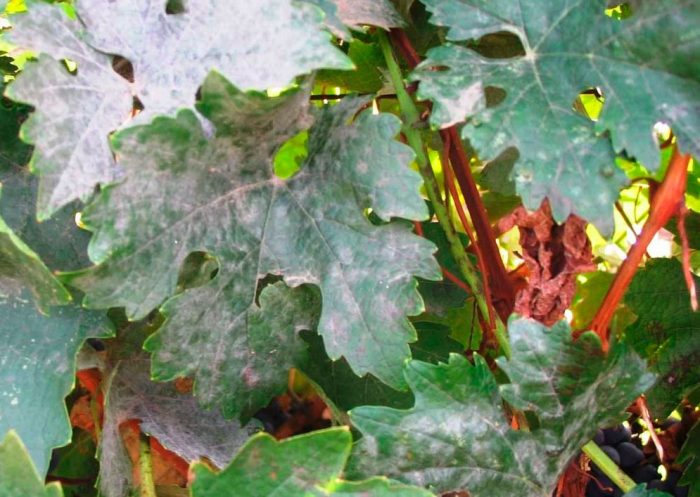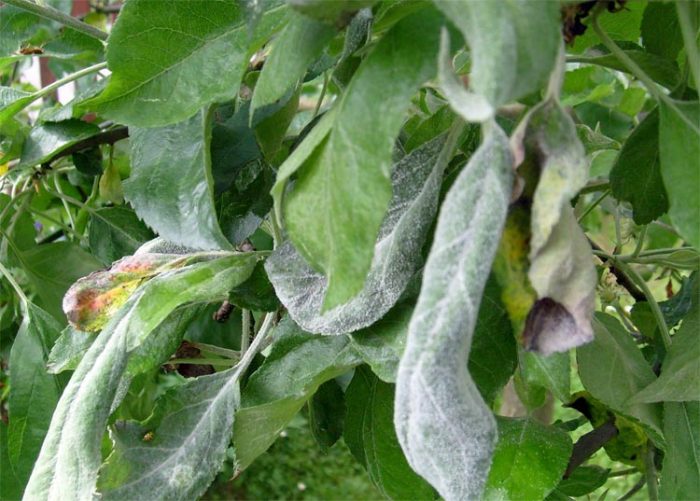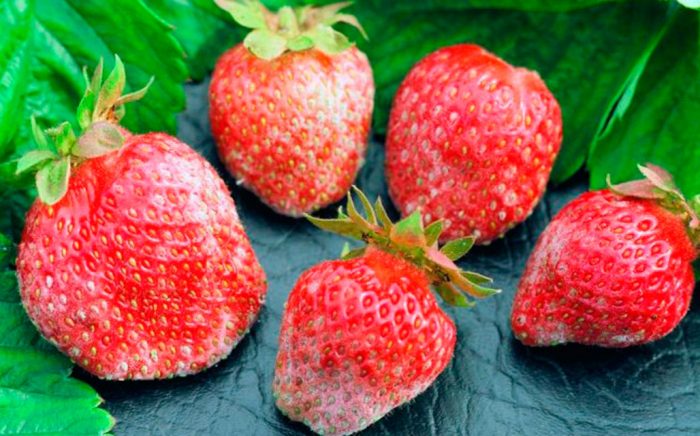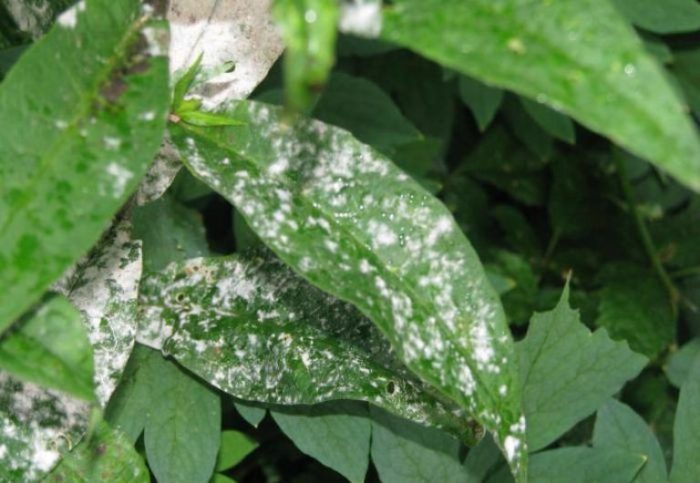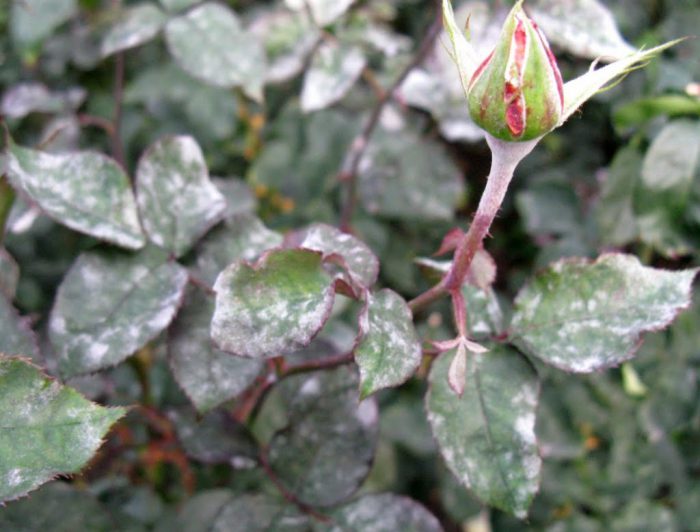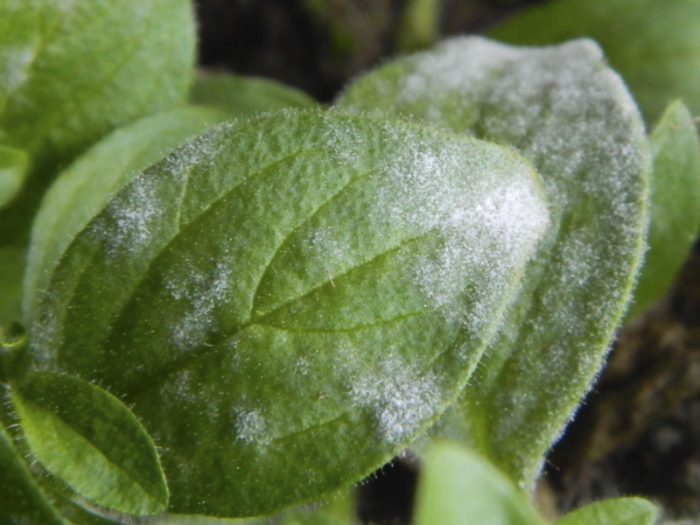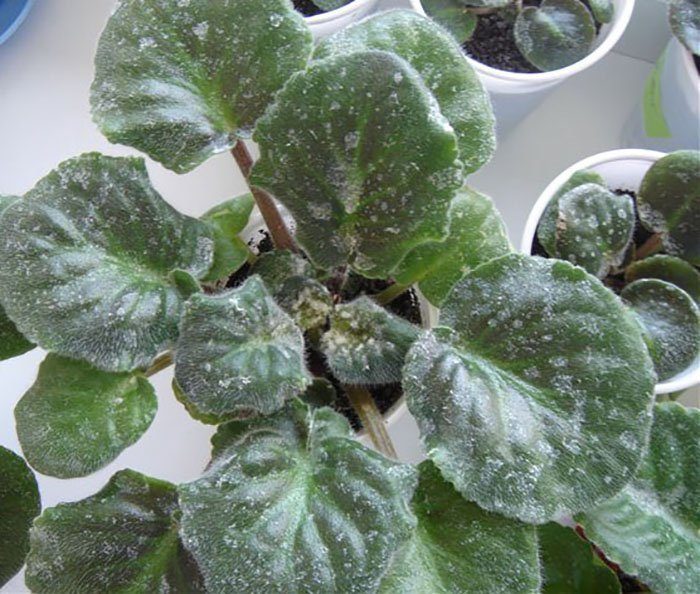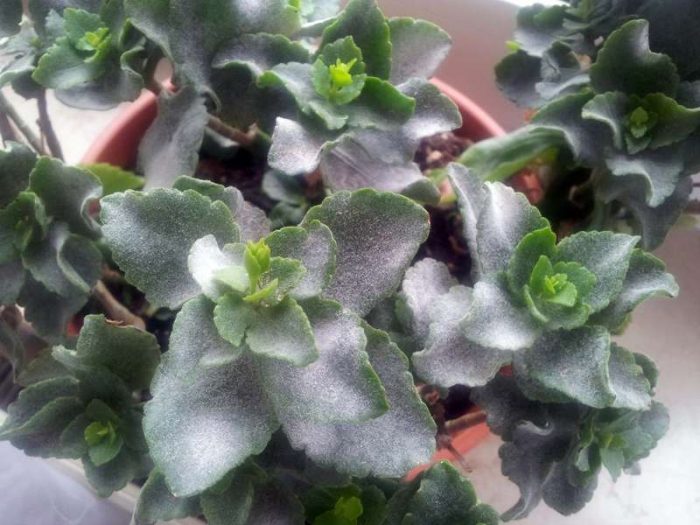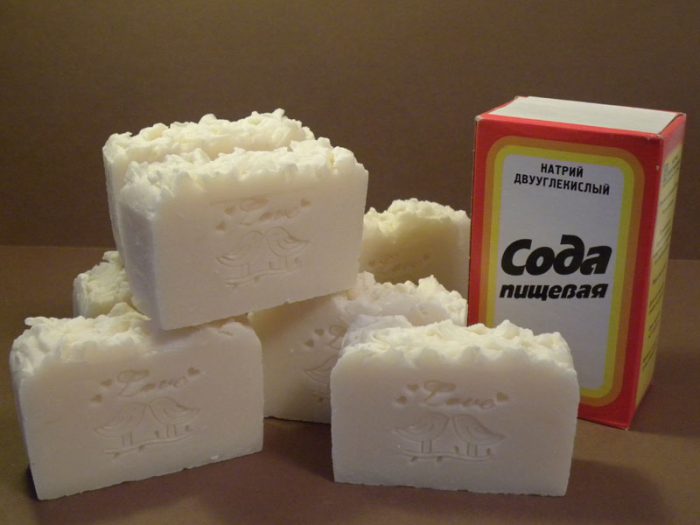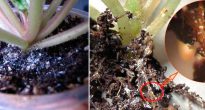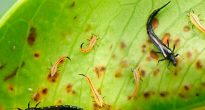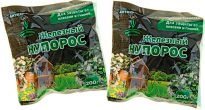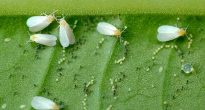Powdery mildew, also called linen, or ash, is a fungal disease, it is caused by microscopic fungi from the order of erysipheus or powdery mildew that live in the ground. Most crops are affected by the disease, such as grapes, roses, gooseberries, cereals, peaches, pumpkin crops and sugar beets. At the same time, the signs of the disease in each plant are the same, but the pathogens are different. For example, American powdery mildew, which affects peaches, gooseberries and roses, is caused by three different spherothemas.
Content
Features of powdery mildew
The first sign of powdery mildew damage to the plant is the appearance of a whitish mycelium bloom, while drops of moisture appear on its surface. Such plaque can form on petioles and leaf plates, on young shoots, and also on the stalks and fruits of various cultures. The stems and foliage that are closest to the soil surface are affected first, after which the disease begins to gradually spread, covering the entire bush. If you look at the plaque carefully, you can see that ulcers form in those places where the mycelium is attached to the plant. It gradually fades and loses its decorative effect, since the fungus takes nutrients from it, and besides, the process of photosynthesis is disrupted from the foliage on which there is a plaque. The culture affected by such a disease becomes less resistant to frost. Cracks appear on those fruits that are affected by the disease, and rot pathogens can penetrate through them, which leads to secondary infection.
Fungi are most active under the following conditions:
- during prolonged rains or with high humidity (from 60 to 80 percent) at a temperature of 15-27 degrees;
- often there is a sharp change in temperature;
- after radical pruning, carried out in order to rejuvenate the plant;
- the earth contains an excessive amount of nitrogen;
- plantings are strongly thickened;
- the wrong irrigation regime has been chosen, or rather, if the soil often dries up or water stagnation is regularly observed in it.
Ways to fight
Powdery mildew treatment
If you are sure that the culture is affected by powdery mildew, you must remove from it all flower stalks and leaf plates that have turned yellow and wilted as soon as possible. Sometimes you have to cut off a significant part of the foliage, but you should not be afraid of this, since removing the affected parts of the plant, you increase the chances of its recovery.
Next, carefully treat the diseased bush with a fungicidal preparation, the solution should well moisten all its aerial parts. In this case, the medicinal mixture during processing should flow through the plant as if a very heavy rain had just passed. If a culture growing in open ground is being treated, then together with it with a solution of a fungicidal preparation, the surface of the soil in the garden or in the near-stem circle is also necessarily treated.
Such a disease can also affect house plants, what should be done in this case? After the bush is well treated with a fungicide, they should also spray the walls of the container in which it grows and the surface of the substrate. If the plant is very badly affected, then the top layer of the soil mixture, which contains the colony of fungal mycelium, will have to be removed from the container, and a new substrate is poured in its place, which must first be disinfected.
Prevention measures
In order to get rid of powdery mildew, an integrated approach is needed. In addition to mandatory treatments with chemicals, special agronomic measures are used:
- watering is carried out only when the topsoil dries well;
- in the autumn, the site must be cleaned of plant residues, which are then destroyed;
- it is imperative to adhere to the rules of crop rotation;
- for cultivation, choose hybrids and varieties that are highly resistant to powdery mildew;
- do not apply too much nitrogen fertilizers to the soil, especially during the formation of buds;
- timely apply phosphorus-potassium fertilizers to the soil, as they contribute to increasing the resistance of the crop to disease;
- in spring, it is imperative to carry out sanitary pruning of shrubs and trees;
- regularly spray trees and bushes with a fungicidal preparation for prophylaxis, do this in early spring and at the end of leaf fall.
For prevention purposes, plants are sprayed with other chemicals that are used in the fight against powdery mildew. For example, the bushes are pollinated with sulfur 3 or 4 times, you can also spray them 3 times with a solution of Bordeaux mixture, copper sulfate or another agent that has a similar effect.
Powdery mildew on vegetables
Cucumbers
If the cucumbers are affected by powdery mildew, then both fungicidal preparations and folk remedies can be used to treat them. However, it is impossible to get rid of powdery mildew on this vegetable crop without preventive measures. First of all, it is imperative to adhere to the rules of agricultural technology for cucumbers, and also the beds must be sprayed with a solution of Quadris (strictly follow the instructions on the package). But in some cases, the disease still affects the plant, even despite preventive measures.
What to do to cure cucumbers? For the treatment of such a vegetable crop, both folk and chemical remedies can be used. However, whatever you choose, before proceeding with the treatment, you must remove and destroy all parts of the bush affected by the disease.
It helps quite well in the fight against powdery mildew, dusting the plant with sulfur powder, while for 10 square meters of planting, from 25 to 30 grams of the drug is taken. Also, cucumbers can be sprayed with a solution of colloidal sulfur (for 10 liters of water from 25 to 30 grams). Even with powdery mildew on this culture, they fight with the help of mullein infusion, which also needs to process the bushes.
Of the fungicidal preparations, Topaz or Oxyhom is most often used in this case, if you decide to use them, then be sure to strictly follow the instructions attached to the tool.
Tomatoes
Powdery mildew can appear on tomatoes due to 2 types of mushrooms. One of them is Oidiopsis erysiphoides, it most often affects shrubs grown in greenhouse conditions. As a rule, this happens in March, if the greenhouse was not disinfected before planting the seedlings. In the affected seedlings, leaf plates begin to dry out from the edges, if you do not start treating it in time, then there is a high probability that it will die. Another causative agent of this disease is Oidiopsis taurica. In tomatoes affected by such powdery mildew, yellow specks form on the front surface of the foliage. At the beginning, a whitish bloom forms only on the seamy surface of the leaf plates, but as the disease progresses, it also appears on the upper side of the foliage.
In order to prevent the defeat of tomatoes by powdery mildew, you need to adhere to those preventive measures that were described above. And even before sowing, the seed material of a tomato is recommended to be immersed in a solution of Epin or Immunocytophyte for 42 hours. However, if, nevertheless, the vegetable culture is affected by powdery mildew, it is necessary to start fighting it as soon as possible. It is recommended to spray young plants with sodium humate solution, it is able to completely suppress the germination of conidia, which are the causative agents of this disease. The processing of tomatoes is carried out regularly 1 time in half a month, while you must strictly follow the instructions. Also, for this purpose, you can use biological preparations that are specially designed to combat powdery mildew. For example, you can use a solution of Baktofit (1%), they should spray tomatoes 3 times with an interval of 1–1.5 weeks. In this case, you need to start processing immediately after the first symptoms of the disease appear. Tomatoes can also be cured with the Planriz culture liquid, with which the bushes also begin to process after the first symptoms of the disease appear.
Of the fungicidal preparations, the most effective are: Strobi, Topaz, Quadris, Tiovit Jet, Bayleton and Privent. In order for the product to better "stick" to the sprayed plant, a small amount of laundry soap or silicate glue should be added to the solution. For those who do not want to use chemical preparations for the treatment of vegetable crops, milk whey (10%), wood ash or reverse can be used for treatment and prevention.
Zucchini
If the zucchini is struck by powdery mildew, and a white bloom has formed on them, it is necessary to cut and destroy all diseased leaf plates and stems, and they also dig the soil surface around these bushes. In order to cure plants, they can be treated with a solution of wood ash, soda ash, or mullein. Most often, gardeners use chemicals such as Carboran, Kefalon or sodium phosphate, as they are very effective in combating this disease.
Preventive spraying is carried out at the beginning of the spring with a Nitrafen solution. For medicinal purposes, the treatment is carried out before the plant blooms and at the end of flowering, while using those preparations that were described above. When using fungicidal agents, you will need at least three treatments, which are carried out with a break of 1–1.5 weeks, while zucchini is treated with folk remedies regularly every two days. Treatment is recommended to be carried out in the evening on a fine day.
Eggplant
Eggplants affected by powdery mildew can be cured with a solution of soda ash, and for this you can use any fungicidal preparation, for example, Fundazol (10 grams per bucket of water). In order for the plants to recover completely, they will need at least 4 or 5 sprays with a break of seven days.
Onion
Onions are susceptible to damage by downy mildew (downy mildew).This fungal disease is also very dangerous for vegetable crops. Low temperature and high air humidity contribute to its development. The causative agents of this disease are carried by raindrops or wind, and even with plant debris.


Watch this video on YouTube
Controlling powdery mildew on shrubs and trees
Currant
Currant bushes affected by powdery mildew are hard to miss. And if you do not start immediately fighting this disease, then by the second half of the summer period, the entire currant may be affected. It does not matter which currant is affected by powdery mildew, black, white or red, this disease is equally dangerous for it.
You can try to cure diseased currant bushes with both folk remedies and chemical preparations. You need to spray the shrub on each side, while trying to get the drug solution not only on all leaf plates, but also on each of its surfaces: both on the upper and lower. The plant can be treated with either a sprayer or a soft bristled brush. Processing currant bushes should be done in the evening at sunset, while choosing a dry, fine day. Treatments should be carried out for at least four weeks, while the bush is sprayed at least once every seven days.
Also, for the treatment of currant bushes, folk remedies that have been tested by time are often used. For example, they can be treated with soda ash, milk whey, a solution of wood ash or cow dung, a pinkish solution of potassium manganese, powdered with sulfur, etc. As a rule, folk remedies are used only at the initial stage of the development of the disease, if the bushes are very strongly affected , then you will have to use special chemicals. In spring, they are treated with a solution of Nitrafen or iron sulfate (30 grams per bucket of water), you can also use copper sulfate (10 grams of the drug per bucket of water). During the formation of buds, a solution of copper oxychloride is used to spray the bushes, for the preparation of which it combines a bucket of water with 30 grams of the drug or Bordeaux mixture (1%). When the currant fades, it is treated twice or three times with soda ash with a break of one and a half weeks. In the autumn, it is necessary to remove all plant residues from under the plants.
Gooseberry
The methods of dealing with powdery mildew on gooseberries are exactly the same as those used to treat currants. For spraying such crops, kefir, cow dung, wood ash, milk whey, yogurt, baking soda or soda ash, as well as a decoction of tansy or horsetail and an infusion of onion husks or rotten hay are used. The most effective chemicals in the fight against powdery mildew are Gaupsin, ammonium nitrate and Trichodermin. And Fitosporin in the treatment of the disease is as effective as in the treatment of phytophthora.
Grapes
The powdery mildew that grapes can get sick with is called powdery mildew. The first symptoms of such a disease are the same whitish bloom that forms on shoots, fruits, foliage and stems. The disease develops most actively at high humidity and temperatures from 18 to 25 degrees, but during the rains, a slowdown in the spread of infection is observed. In the summer, when the air temperature does not drop below 20 degrees, the grapes are treated with sulfur, so, for treatment, a solution is used, for the preparation of which 1 bucket of water and from 80 to 100 grams of the drug are combined, and for prevention purposes, from 25 to 40 grams of substance per 10 liters of water. If the weather is cool, then sulfur preparations are used for treatment, for example, a solution of colloidal sulfur. But during the formation of fruits, it is not recommended to use chemical agents for processing.At least 30 days before harvesting, it is necessary to stop spraying the grapes with those drugs that are toxic to the human body.
During the filling and ripening of fruits, grapes affected by powdery mildew can be treated with a pinkish solution of potassium permanganate, this will stop the development of the disease. And after all the fruits are harvested, chemicals can be used to treat the plants. Such a culture can be treated with fungicidal preparations, the most effective in this case will be: Tiovit Jet, Quadris and Topaz.
Apple tree
If apple trees are severely affected by powdery mildew, this can have an extremely negative effect on their yield, reducing it by half. In addition, apple trees may become less resistant to frost. This disease is of great danger to nurseries, as it spreads very quickly from tree to tree.
There are also effective remedies that will help cure apple trees and other fruit trees from powdery mildew. Most often, a solution of soda ash mixed with soap, colloidal sulfur or copper oxychloride is used to treat the affected plant, while spraying is carried out regularly 1 time in three or four days. Topaz also helps very well in the fight against powdery mildew on apple trees, while for prevention purposes they begin to process them from the beginning of the growing season. If the plant is already affected by the disease, then it will have to be sprayed with Topaz solution 3 or 4 times with an interval of 6-12 days. In order to prevent the spread of the disease, before starting treatment, all affected parts of the tree are cut and destroyed.
Strawberry
If the strawberries are struck by powdery mildew, then it will be possible to understand this by the whitish bloom that forms on the seamy surface of the leaf plates, because of this they eventually become leathery to the touch, while their edges twist and turn bronze. The greatest concentration of powdery plaque is observed on the whiskers, as well as the central leaf plates. The fruits formed on the diseased bush also form a white bloom, and they also have a moldy smell. For preventive purposes, do not allow the plantings to thicken; for this, strawberries need to be thinned and transplanted regularly. For treatment of diseased plants, a suspension of colloidal sulfur (1%) or TMTD is used, as well as such agents as Bayleton, Switch, Quadris or Fundazol, while spraying is carried out after the bushes have faded, as well as after harvesting. When spraying, try to wet both surfaces of the leaf plates.
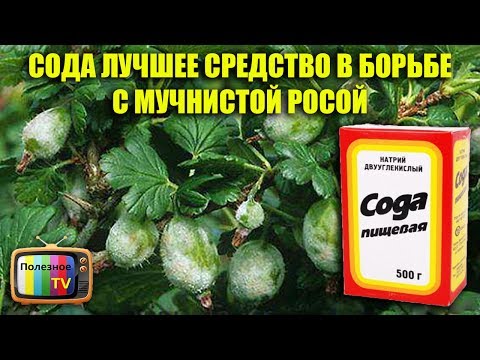

Watch this video on YouTube
Powdery mildew on garden flowers
Phlox
Powdery mildew affects not only vegetable, fruit and berry crops, but also garden flowers. For example, a whitish bloom in the middle of summer can form on foliage and phlox shoots. As the disease progresses, it changes its color to a darker one and eventually becomes dirty brown. Because of this, the decorativeness of plants suffers greatly.
If the first symptoms of the disease were found on phloxes, then it is necessary to cut off all the affected leaf plates from the flowers as soon as possible and dig out the severely diseased bushes, after which they are burned. The remaining plants need to be sprayed with a solution of colloidal sulfur (1%), while several treatments are carried out with a break of seven days. As a preventive measure, the soil surface in the flowerbed is covered with a layer of mulch (peat or humus), and in early spring, after the height of the stems is 100 mm, the bushes are sprayed with a solution of Bordeaux mixture, 3 treatments will be required, which are carried out 1 time in 12-14 days. In order for the flowers to be more resistant to this disease, it is recommended to use a complete mineral fertilizer as a top dressing.
Roses
Powdery mildew affects a variety of flowering plants, and roses are also affected by it. If the bushes are very badly affected, then all the foliage on them will curl up, dry up and fly around ahead of time, while a felt bloom forms on the surface of the bare stems and shoots, it will not let the flowers grow and develop further. In order to prevent the development of this disease, the surface of the area near the roses should always be clean, while trying to remove weeds almost immediately after they appear. In the autumn, when leaf fall ends and sanitary pruning is carried out, the site must be cleaned of all plant residues that should be destroyed. And the surface of the soil under the bushes must be dug up.
As soon as the first signs of disease damage are found on the bushes, you need to start processing them immediately. To do this, use a solution of Fundazol, Maxim, colloidal sulfur or Fitosporin-M. In early spring or in autumn, roses are recommended to be sprayed from powdery mildew with the following mixture: 0.3 kilograms of green soap, 15 grams of copper oxychloride, and another 50 grams of soda ash are taken for 1 bucket of water.
Petunia
Petunia is also susceptible to powdery mildew. A whitish bloom appears on the surface of the bushes, which eventually spreads to all aerial parts of the plant. Due to this disease, rot forms on the flowers, and they die. In order to save them, you should cut out all the affected areas of petunias and destroy the ear, after which the flowers are treated with a fungicidal agent, for example, Skor, Previkur, Topaz or Fundazol. In the case when the flowers are grown not in the open field, but in a container or pot, it will be necessary to remove the top layer of the substrate and pour fresh soil mixture instead, which is pre-treated with Fitosporin-M.
Of all the folk remedies used to combat this disease on petunias, treatment with an ash or soap-soda solution shows the greatest efficiency, and for this purpose you can use potassium permanganate, serum, mustard or garlic infusion.
Violets
In the garden violet, which is also called viola, with a disease with powdery mildew, foliage, buds and shoots suffer. The most common causes of the development of the disease are: an excessive amount of nitrogen in the soil or heavy morning dew on a dry, fine day. Diseased bushes become less spectacular, and they also bloom much less than the prescribed period. In this case, to cure the flowers, chemicals such as Topsin-M, Fundazol, Morestan, Ftalan, Kuprozan, Tsineb are used, and bushes can also be sprayed with a solution of soda ash, to which a little soap is added.
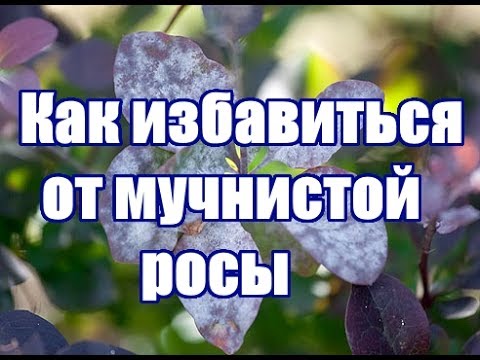

Watch this video on YouTube
Powdery mildew on indoor plants
Some domestic flowers are also affected by powdery mildew, for example: begonia, cissus, saintpaulia, gerbera, rose and Kalanchoe. As a rule, the disease begins to develop due to stale air with high humidity, sharp temperature fluctuations during the day and night, and dry soil mixture. The causative agents of such a disease can be transferred from the affected bush to a healthy air stream, by pests, or during contact with each other (containers with flowers are very close). You can understand that the flower is sick by the formed whitish specks, which can be found on both surfaces of the leaf plates, as well as on the buds. Immediately after detecting such symptoms, you need to start fighting the disease. If the treatment is started too late, then the flower may lose its decorative effect, and rot will appear on it. At the very beginning of the development of the disease, the bushes can be treated with garlic infusion or a solution of potassium permanganate or soda ash.If the plant is very sick, then chemicals cannot be dispensed with, in this case they use Skor, Hom, Vectra, Baylon, Fundazol, Vitaros, Topaz or Tiovit Jet. Before preparing the solution, you must carefully study the instructions attached to the drug.
As a preventive measure, you should properly water the flowers, feed them with phosphorus-potassium fertilizers, systematically ventilate the room, and also remember to observe plant hygiene.


Watch this video on YouTube
Preparations and folk remedies for powdery mildew
Chemicals
The most frequently used chemicals in the fight against powdery mildew are: Skor, Quadris, Hom, Vectra, Tiovit Jet, Fundazim, Fundazol, Vitaros, Bayleton, Phtalan, Tsineb, Kuprozan, Topsin-M, Fitosporin-M, Previkur, Switch, Bordeaux liquid, copper sulphate, copper oxychloride, colloidal sulfur, etc. These funds can be purchased in a specialized store, while they must be used strictly following the instructions attached to the drug, and in no case do not increase the dosage yourself.
If fungicides have been chosen for spraying home flowers affected by powdery mildew, then the procedure will need to be carried out outdoors, and safety precautions must be followed. Fruit shrubs and trees, as well as berry and vegetable crops, are recommended to be sprayed with such chemicals only if they are very severely affected, however, during the active growth of fruits, all chemical treatments must be suspended.
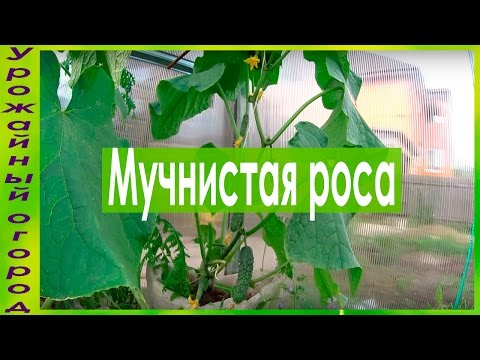

Watch this video on YouTube
Folk remedies
At the initial stage of the development of the disease, folk remedies are usually used to treat plants. There are many time-tested folk remedies that are absolutely not dangerous for both humans and cultures. For instance:
- Soda and soap solution... To prepare it, you need to dissolve 20 grams of liquid or grated laundry soap, as well as 50 grams of baking soda or soda ash in one bucket of water. The plant should be sprayed at least twice with an interval of 7 days.
- Milk whey solution... In order to prepare such a remedy, you need to combine 1 liter of whey with 1 bucket of water. A well-mixed mixture is sprayed on a dry, fine day, there should be at least three such procedures with intervals of three days.
- Kefir solution... To prepare the product, you will need a liter of fermented yogurt or kefir, diluted with water in a ratio of 1:10. It will take three treatments with an interval of three days.
- Field horsetail... A decoction is prepared from horsetail; for this, 100 grams of grass is mixed with a liter of water. The mixture is allowed to brew for 24 hours, and then brought to a boil and kept on low heat for a couple of hours. When the broth has cooled, it is filtered and mixed with water in a ratio of 1: 5. For a complete cure of the plant, at least 3 or 4 sprays are required, which are carried out with an interval of five days. The undiluted broth, placed in a cool and dark place, retains its properties for seven days.
- Mustard... In one bucket of lukewarm water, you need to dissolve 2 large tablespoons of dry mustard powder. With the resulting solution, the diseased plant is either watered or processed.
- Potassium permanganate... To make such a solution, you need to mix a bucket of water with 5 grams of potassium permanganate. This mixture helps to stop the development of the disease, and it also removes the fungus from the surface of the fruit.
- Wood ash... For 1 bucket of water, 1 kilogram of ash is taken. The infusion will be ready in a week. It is carefully drained and 20 grams of household or liquid soap crushed on a grater is added to it. The plant is sprayed with the agent regularly every two days.
- Cow dung (mullein)... Combine water and manure in a 3: 1 ratio and mix everything well. The infusion will be ready after 3 days. It must be carefully drained and diluted with the same amount of water.Cultures are sprayed with this means before they bloom, after flowering, and also shortly before the beginning of leaf fall.
- Garlic... To prepare the infusion, add 50 grams of garlic pulp (cloves chopped together with garlic shoots) into a couple of liters of water. After a couple of days, the agent is filtered and used for treatments in an undiluted form.
- Onion husks... 1 bucket of boiling water is combined with 200 grams of onion peel. The infusion will be ready after 2 days, it will only be necessary to strain it. The processing of crops is carried out before flowering, after the bushes have faded, and even before the beginning of leaf fall.
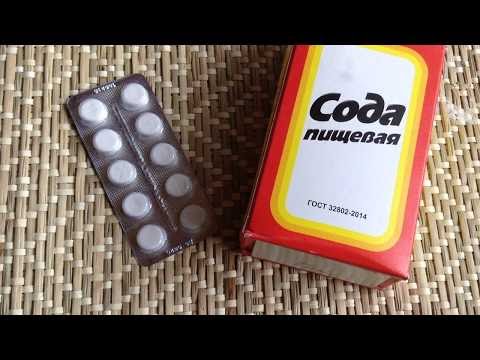

Watch this video on YouTube

